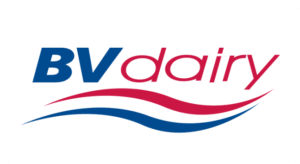

Location: Blackmore Vale and Shaftesbury, Dorset, United Kingdom
Industry: Dairy and Food Processing and Manufacturing
Website: www.bvdairy.co.uk
Founded in 1958 as a family farm in England’s West Country, BV Dairy is now a thriving modern business. Each year, the company purchases 35 million liters of milk from dairy farms within a 25-mile radius of their production facility in Shaftesbury, Dorset and turns them into dairy products for food distribution and manufacturing firms. BV Dairy’s range includes their award-winning Dorset clotted cream, as well as yogurts, buttermilk, soft cheese, and mascarpone.
The Durham, NC Post Office in Research Triangle Park boasts among its clients some of the best-known names in high-tech research and development, names such as Cisco Systems, DuPont, GE, Lenovo, National Semiconductor, Sony Ericsson, and more.
Another Research Triangle Park business-one that may not be as well known-is First Insurance Services, an 18-person independent insurance agency that has served the region and its businesses since the 1994 merger of the two agencies that formed it. Personal Lines Manager Cathy Bowling, AAI, AIS, CPIW, has been with First Insurance Services since its inception and with one of its predecessor agencies for 18 years before that.
In her time in the business, Bowling has seen technology play an increasingly important role in boosting efficiency and customer service. “I was working for an agency when companies started direct-bill,” she recalls. “Insurance agencies were fighting that tooth and nail.”
She remembers using manual typewriters (the agency actually had electric models at the time, but they were not always convenient) to complete applications on ACORD forms, which were relatively new at the time.
“When I first came into the business, there were no cost estimators for property risks,” she notes. “When the companies made us start using those, I thought they were the best things since sliced bread.” That was then. Technology has progressed far beyond electric typewriters and cost estimators.
In the past several years, Bowling has watched other technologies enter the market and has seen how they’ve improved delivery of insurance products and services to clients. As part of her involvement in agent associations and the National Association of Insurance Women, she has attended seminars and conventions where vendors displayed these advances.
“DocStar gives us the power to add and retrieve more documents to and from the system. It increases our accuracy, efficiency, and traceability. Furthermore, this solution has plenty of flexibility that lets us tune and tweak workflows as our business processes change and grow. Most of all, the introduction of DocStar has allowed us to streamline processes and save time—notably in terms of invoice approval and delivery note processing—because it brings all of the relevant information and documentation together in one place.”
-Mark Damen, ERP Systems Manager | BV Dairy
Through these venues, Cathy has gotten a chance to see document management at work. Over time, her agency worked through procedural and workflow issues in an effort to determine the best way to handle the files their work generated. “We learned about various options, including transactional filing and imaging,” she says. “We discussed the issues among agency management on which way we should go.”
Ultimately, the agency opted for electronic document management software and chose DocStar as its partner in the venture. “I’d been pushing for us to move forward on document management,” Bowling recalls. “When DocStar became integrated with TAM (the agency’s management system), that’s when we made the decision.”
The local DocStar reseller, J. Page Wilson of Durham-based Paperless Solutions, helped ease the decision-making. “Once he was able to show us how simple it was to use, how secure things were, and how hard it would be for us to lose a document, that really helped,” Bowling states. The agency was concerned up front about potential chaos that could follow such a dramatic change. Built-in features of DocStar, including the ease of setting up document naming conventions, helped cement their decision.
Today, the agency scans documents as they come in the door. Before DocStar, mail would arrive; somebody would cut open the envelope, remove the contents, stack it by addressee, and deliver it to different desks. Years ago, before the agency moved its customer information database into an agency management system, someone would have to pull individual file folders and combine them with the correspondence.
That’s no longer the case. Now documents-policy and account processing documents for personal lines of insurance-are received, opened, scanned and delivered to electronic inboxes. The customer service associate (CSA) handles the work generated by the correspondence right within the management system, and then electronically links the imaged document right with the client record in the system.
A half-dozen or so individuals within the agency’s personal lines operation use DocStar ECM. Each has his or her own electronic inbox where all the documents go. Each desk has two monitors, so the scanned image can be open on one screen and the management system or other processing tool on the other. “We got dual monitors shortly after DocStar and found that to be an immense improvement,” Bowling says. “We should have added them a long time ago.”
To help calm the chaos fears, the agency worked with DocStar ECM and the reseller to set up templates that would standardize document naming. It was the partnership of all three that made it work. Bowling notes, “DocStar helped us think about how we might want to adjust workflows and set up the templates. Their experience and specific recommendations helped smooth-and speed-the transition.”
Happy management and staff
Today-more than a year after installation-DocStar and the integration with the management system are running like clockwork. Bowling is pleased with the results. “What I like most is the ability to manage the paper that comes into the office and actually, the ability to get paper out of the office,” she says.
She sees benefits from a management standpoint, too. “We are better able to track our CSA workflows and their work processes,” she says. Work is in the electronic inbox, and management can monitor it remotely. No longer must Bowling walk around and measure stacks of paper on the corner of CSA desks-or worse yet, tucked in their desk drawers.
“I’ve not done an official audit, but from time to time I go in and check each of the in-boxes to see if they’re up-to-date and meeting our established service standards,” she notes. “I can see the exact time a document came in and how long it took to attach it or if it’s still sitting there.”
Bowling uses this information-and the simplicity of the system-to redistribute work, when needed. “If someone is out for a few days it’s actually easier to shift work around than when we were using paper,” she states. “It really is.”
How do the CSAs like DocStar? “They’re delighted,” Bowling says. “They’re really happy that we bit the bullet. They’re more efficient, too.” The unit processes the same amount of work it did a couple of years ago, but with one less person. “We lost one of our CSAs a couple of months before we started using DocStar,” Bowling recalls. “We didn’t replace that position, but rather absorbed the customer base. I believe that having DocStar made that easier.”
With a little more than a year under their belts, the agency is ready to start reaping the storage benefits of going paperless. “We didn’t go back and scan our existing files,” Bowling explains. However, all new accounts and current transactions are on the system. As old files exceed the amount to time that regulations say the agency must keep them, the shredding will start. That will begin to free up file cabinet space and allow the agency to use storage areas for other purposes.
Along the way, Bowling encountered some instances of human nature surfacing. For some of the staff, the learning curve and system acceptance were a little slower in coming than she’d expected. “Part of that is just a resistance to technology and not wanting to give things up,” she says. “But once they found out how much easier it was, with a keystroke or two, to have a document the underwriter was looking for, things changed. The ability to fax or email that document right from the desktop was an added bonus,” she recalls.
Bowling is eyeing other uses for DocStar ECM. “For instance, when we get correspondence that needs to go to all staff, we normally photocopy and distribute it,” she says. “Now the agency will be able to put that information in a single folder on the system where everyone can go and view it.” That’s particularly valuable since the agency receives bulletins and other correspondence from the different carriers it represents as an independent agency.
The commercial lines department is another area for future deployment. Already, personal lines CSAs who are using the system have been evangelizing their commercial lines counterparts across the tops of cubicles.
Personal correspondence-to managers and supervisors-also is on the table. “There are certainly other ways we could use the systems-the agency management system and DocStar,” she says. “I still seem to have a lot of paperwork cross my desk.”
But for now, Bowling is pleased to have happy CSRs, ones who are using the latest technology to manage paper and who are eager to share with others in the company the successes they’ve had.
© Epicor Software Corporation 2025 | Terms of Use | Privacy Policy | Cookie Policy |